Do you want to know which are the best DSLR cameras for budget prices in 2025? DSLR and EVIL (CSC) cameras for beginners and professionals (or enthusiasts)?
If you are looking for a good, beautiful and Best DSLR For video Under 500 Dollars in 2025, you have to stop looking because we are going to present you with the best models for a quality price that you will be able to buy this year.
What Is A DSLR Camera And How Does It Work?
Table of Contents
A digital SLR camera, or also called DSRL (Digital Single Lens Reflex) owes its name to two fundamental characteristics: 1. SLR Viewfinder: This means that when we look through the viewfinder, we see, without any delay, the scene. This occurs thanks to a mirror placed at 45º and a pentaprism that leads and inverts the image so that we can see it correctly through the viewfinder.
The basis of the operation of the SLR cameras is a mirror that tilts when the photo is shot and which is what defines the path that the light can follow inside the camera. Under normal conditions, the mirror in front of the shutter is tilted 45º by diverting the light to a pentaprism and from there to the viewfinder.
When the picture is taken the mirror is placed horizontal and allows the light to pass to the sensor. At that time, the lens diaphragm is closed and the shutter is opened to allow exposure of the sensor to light. Subsequently, the shutter closes, the diaphragm reopens and the mirror returns to its initial position.
Is it worth buying an SLR camera?
If you are a lover or a photography professional, surely you have a clear answer. In our opinion, it is worth it, especially it is worth it if you have the necessary knowledge to take advantage of equipment as precise as a reflex camera. And the difference in the quality of the photographs is considerable.
Who is it advisable to buy an SLR camera?
SLR cameras are recommended for all people who want to take high-quality photographs, thanks to their powerful sensors. More specifically, they are ideal for photography enthusiasts who have advanced knowledge and for those who wish to leap professional photography.
Best DSLR for video Under 500 Dollars
Despite the growing popularity of mirrorless cameras, humble DSLR cameras are honored as the number one format used by photographers in 2025.
DSLR technology can belong in your teeth, but at least at this time, there’s nothing like taking a picture through an OVF (Optical ViewFinder).
It was clear that the DSLR would normally recommend a handful of the best DSLR cameras for less than $ 500 to provide better ergonomics, longer battery life, more competitive prices, and higher reliability.
Also Read: Mirrorless Camra Under 1000 USD
Best DSLR for video Under 500 USD | Comparison Table 2025
Affordable Picks | High Quality | 5-Stars
| Camera Name | Resolution | MP | Price $$ |
|---|---|---|---|
| Nikon D3200 | 720p HD | 21 | |
| Panasonic Lumix DMC-ZS50 | 720p HD | 14.1 | |
| Sony Alpha a5000 | 720p HD | 16 | |
| Kodak AZ401-WH Cheap DSLR Camera | HD1080P | 24 | |
| Canon PowerShot G9 X | 720p HD | 16 | |
| Canon EOS Rebel T5 | HD1080P | 20 | |
| Samsung NX3000 | HD1080P | 20.3 |
Best DSLR for video Under $ 500 | 2025 Products Overview
1. Nikon D3200 Best DSLR for video Under 500
- Type: DSLR
- Resolution Max: 1080P
- Mega Pixel: 24.7 MP
- Image Stabilizer: Yes
- Screen 3″, Tilt
- Connectivity: Wi-Fi, NFC
- Lens:
- Battery Life: 3hr + Recording
About:
The first product on the list is nothing more than a respected Canon brand. The Canon EOS Rebel T6 is a compact and elegant DSLR camera with an 18MP APS-C CMOS sensor and DIGIC 4+ image processor. It consists of a general set of image functions that provide high image quality and reduce noise.
With an ISO 100-6400 sensitivity range, it can be extended to ISO 12800 to work comfortably in low light.
Sensors and image processors allow you to shoot moving subjects continuously at 3 fps. The video recording quality is also excellent, and the 1080p HD video can be recorded. Features a 9-point AF system including a single central cross AF point for maximum accuracy, speed, and focus.
The contrast-detection focus system provides clear autofocus accuracy for recording video and working in a live view. 3.0″ 920K rear provides sophisticated images for playback and review.
Also Read: Best Digital Camera Under 200
Design:
Features:
Its 23.2 x 15.4 mm and 24 megapixel CMOS sensor allows you to take pictures at incredible 6016 x 4000 pixels. This is more than enough for most beginners. The image processing chip that it incorporates is the Expeed 3, also present in the Nikon D5200 and old glories such as the Nikon D800.
Another improvement in D3200 that can shoot at 4 frames per second (fps), the D3100 did it at 3. And its maximum opening speed is 1 / 4,000 seconds. Although this is enough for most beginners, if you are going to focus on taking snapshots in fast situations you will want something faster like the Canon EOS 70D.
It offers video in Full HD (1920 x 1080), but at most, it will record at 30 fps, this is not usable if you want to use slow motion. If you want an SLR that gives you 60 fps and Full HD, you can try the Nikon D5300 or even its younger sister the D3300.
Although it must be said that the D3200 does offer 60 fps at HD resolutions (1280 x 720), this may help.
The screen it incorporates is not articulated, nor is it touch and is 3 inches. If you want something better here, you can take a look at the Nikon D5500.
As the ISO can be up to 6400 and its quality, taking into account that it is a reflex for some time, it is acceptable.
Connectivity:
Built-in Wi-Fi and NFC allow you to share images and videos recorded from your camera wirelessly with friends and family. Simply link your smartphone device to your camera and instantly share as many images as you need.
One of the biggest features of this camera is that it comes with a complete accessory package that includes an 18-55mm brand lens, two 58mm professional photo lenses, a 32GB Transcend SDHC memory card, and a memory card. 16GB, Vivitar Gadget Large Bag, Tripod, 3-Piece UV Filter Kit, USB Card Reader, Automatic Power Slave Flash, Remote Switch, Wallet with Memory Card, LCD Screen Protector, Tripod Table, Cleaning kit, lens cap holder.
Now you can get all of these features and accessories at an affordable price! Therefore, this model is one of the best DSLR cameras of less than 500.
- Record Video in 1080p Resolution
- Good resolution
- Decent ISO performance
- Acceptable Autonomy
- Fixed and non-touch screen
- Does not record at 60 fps in Full HD
- It could be a little faster
2. Panasonic Lumix DMC-ZS50 DSLR for video Under $500
- Type: DSLR
- Resolution Max: 1080P
- Mega Pixel: 16 MP
- Image Stabilizer: Yes
- Screen 3″, Tilt
- Connectivity: Wi-Fi, NFC
- Lens:
- Battery Life: 3hr + Recording
About:
The Lumix DMC-ZS50 is one of the best video cameras on the market for less than 500 dollars, with advanced features such as the 12.1 Mp MOS sensor at an economical price. Optical zoom 30x, Leica DC Vario-Elmar 24 mm lens, large 3" TFT LCD screen. It is a high-performance video camera that can shoot full HD 1080p video with crisp and high-quality photos in most situations.
The camera is equipped with a live viewfinder to help you reach the desired accuracy and a control ring that allows you to easily control exposure, focus, and zoom. The Panasonic Lumix DMC-ZS50 is ideal for low-cost, small solutions for video cameras that cost less than 500 dollars. However, if you need high quality, keep reading.
Design:
Despite its phenomenal zoom range, the ZS50 easily slides into the pocket. It is 2.5 x 4.4 x 1.4" (HWD) in size and weighs only 8.6 ounces. This is a typical example of this kind of camera. The ZS50 can be finished in two tones: full black or black and silver.
In addition to the viewfinder, there is a nice 3-inch LCD screen that occupies most of the space on the back of the camera. There is also a button to switch between the two. Or, you can leave it to the eye sensor.
At the top of the camera is a video-only recording button and an on/off button next to the shutter, of course, surrounded by a zoom switch. There is also a mode dial that makes it easy to switch options.
Features:
Intelligent Automatic Mode automatically selects the scene mode. It's not new, but there's also an intelligent burst mode where the camera chooses the speed at which you want to shoot repeated images depending on the scene.
All of these features are outstanding and excellent performance with little experience, the ZS50 has a complete selection of manual mode and RAW shooting. It's great news for enthusiasts who want to take a small camera with a zoom on a trip or want to learn how to take better pictures. Note, however, that the compact manual mode tends to be slightly more restrictive than a digital SLR or mirrorless camera. For example, the maximum aperture of the ZS50 is f/8.
Contrary to the general idea, the more megapixels are, the better. For compact cameras with small sensors, such as the ZS50, increasing the number of megapixels produces more noise at higher ISOs. The ZS50 is less megapixel than the previous version to improve images in low light. This strategy has proven to work very well. The noise is very low relative to categories and prices. The noise reaches around ISO 800, and even ISO 3200 photos aren't that bad, but you may not want to blow up at 8x10. We recommend that you avoid the highest configuration, ISO 6400. Along with a lot of noise, there are noticeable yellow and purple stripes.
Thanks to its stable performance at high ISO, the SZ50 works very well in low-light scenarios. What if the lighting doesn't matter? The color is generally good with accurate saturation. Automatic white balance also worked well in most scenes.
Connectivity:
The ZS50 comes with an AC adapter and USB cable that connects to a dedicated port under the right flap. You need to charge the camera battery. If you only have one battery left, it's fine, but buying a replacement battery can be a hassle.
I wanted Panasonic to use a standard micro USB port to charge the camera because it would be easy to find if I forgot it while traveling. The camera also has a micro HDMI port and a memory card slot that supports SD, SDHC, and SDXC media.
- 12 megapixel 1/2.3” CMOS sensor
- 30x optical zoom (24-720mm equivalent)
- Maximum aperture f3.3-f6.4
- Maximum shutter speed 1/2000
- ISO 80-6400
- 5 axis optical image stabilization
- RAW and JPEG
- Contrast detection autofocus with 23 points
- Manual focus
3. Sony Alpha a5000 Top DSLR Camera for video Under 500 USD
- Type: DSLR
- Resolution Max: 1080P
- Mega Pixel: 16 MP
- Image Stabilizer: Yes
- Screen 3″, Tilt
- Connectivity: Wi-Fi, NFC
- Lens:
- Battery Life: 3hr + Recording
About:
The Sony Alpha A5000 was the fourth Sony compact system camera to appear after deciding to give up the NEX name of the camera with an e-mount.
The first model is the Sony a3000, an entry-level camera with a Design similar to DSLR, similar to the entry-level Alpha of Mount A from the following companies: The next two were the Alpha 7 and Alpha7R, two high-quality full-frame cameras.
Design:
When I received the box containing the A5000, I thought it was empty because it was so light. But it was round edgy. Sony is the "lightest interchangeable lens camera in the world" and says the card (including 9.5) is very thin, weighing 7.4 ounces without a battery.
Currently, in the real world with lenses, it's close to a pound, but it's lighter than its competitors. Battery/Card is the world's lightest DSLR camera with just 14.36 ounces.
The A5000 is not as big as a smartphone, but there is no problem carrying it around all day. This camera replaces what was called the NEX series. The NEX series included the NEX-5T, an interchangeable lens camera with similar attributes.
The A5000 is available in black, silver or white and is 4.4 x 2.5 x 1.9 inches in size. The A5000 is so simple that it uses few keys and dials, so the feature tour is very fast. There is a Sony E-mount on the front, and there are currently about 20 lenses to choose from.
There is also an AF assist lamp, lens release button and several individual stickers on the front.
Features:
There are also 13 image effects, black and white, toy cameras and HDR paints, including high contrast, which can be applied to JPEG images. RAW files are also recorded but can be used at the same time, with no image effect.
The A5000 does not have a viewfinder, but the 460,000-dot 3-inch LCD screen is a tilting unit that can tilt up to 180 degrees to aid selfies shooting. It is worth noting that there are also ports of shoes and accessories without heat since you can't add any external accessories to the camera.
It allows the sensitivity to be set to ISO 16,000, but the maximum continuous shooting speed is modest at only 2.5 fps, and 3.5 fps in speed-first continuous shooting mode.
The kit comes with a 16-50 mm f/3.5-5.6 power zoom with built-in optical stabilization. Since the digital coefficient is 1.5 times, this is converted to 24-75 mm at 35 mm. It is a good starting point, but you will need a longer focal length to take advantage of the camera feeling comfortable.
Connectivity:
Nfc and Wi-Fi technology is integrated, and the first one allows fast connectivity to NFC mobile devices such as Android smartphones and tablets.
Wi-Fi connects to download the Sony PlayMemories camera application to the A5000 and add additional features. These include options such as direct uploads that allow you to upload images to Facebook, PlayMemories Online or Flickr. The smart remote control that allows you to control your camera on your phone or tablet. Timelapse makes it easy to create movies at regular intervals.
- Very high-quality stills
- Improved Bionz-X processor
- Lightweight with the best price
- Selfie-shifting LCD screen
- no viewfinder
4. Kodak AZ401-WH Cheap DSLR For Video Recording
- Type: DSLR
- Resolution Max: 1080P
- Mega Pixel: 16 MP
- Image Stabilizer: Yes
- Screen 3″, Tilt
- Connectivity: Wi-Fi, NFC
- Lens:
- Battery Life: 3hr + Recording
About:
The Kodak PIXPRO AZ401 white digital camera features 40x long-range zoom and a variety of recording features. The 16.15MP CCD sensor allows you to record high-resolution still images and 720p HD video, as well as an expandable sensitivity range of ISO 80-3200 to operate in a variety of lighting conditions.
Wide-angle zoom covers the equivalent focal length range 24-960 mm to work on both short and long-distance subjects, and optical shake correction minimizes camera blur with sharp manual shots.
The back of the camera has a 460k LCD 3.0" dot monitor, which uses four AA batteries as a convenient power source.
Design:
Features:
The 16.15MP 1/2.3 inch CCD sensor produces high resolution still images and 720p/30 HD video in addition to the ISO 80-1600 sensitivity range for working in a variety of lighting conditions. This is ISO 3200 when recording 4MP images that operate under low light conditions.
The 40x long-range optical zoom lens offers an equivalent focal length range of 24 to 960 mm, covering from wide-angle to ultra-telephoto, and also using 4x digital zoom to further expand the scope.
The optical shake compensation feature minimizes camera shake when the camera is shot in harsh lighting conditions or long focal lengths.
The 3.0-inch 460k dot LCD monitor can be used to create and verify images and navigate the menu system.
In 180-degree panorama mode, you can take a panoramic image simply by moving the camera, and you can create a wide-angle composition.
Use face, smile, flashing, cat and dog detection modes to optimize your shooting settings for shooting perfect portraits and pet images.
One or more 9-point autofocus mode is available. You can also use face detection AF to prioritize the subject's face when you take a portrait.
OIS (Optical Image Stabilization)
Don't worry if you're in rough terrain or turbulent sea. Optical shake compensation plans small movements when you focus on getting shots, so you don't have to be afraid to move on to what you want. You can handle it with your camera... Make sure that you can:
The built-in flash provides additional lighting when working in low-light conditions.
Four AA batteries are used as a convenient power supply and provide about 280 shots for each set of new batteries.
Connectivity:
- Optical Image Stabilization OIS function
- 180° Panorama
- 720p HD Video
- 24mm Wide Angle
- Inexpensive
- Slow, inconsistent focus
5. Canon PowerShot G9 X DSLR Camera for video Recording Under 500
- Type: DSLR
- Resolution Max: 1080P
- Mega Pixel: 16 MP
- Image Stabilizer: Yes
- Screen 3″, Tilt
- Connectivity: Wi-Fi, NFC
- Lens:
- Battery Life: 3hr + Recording
About:
The PowerShot G9 X Mark II is an ultra-compact camera, one inch larger than the average CMOS sensor. Serves as the basic model of the CanonGx-X series.
Because Canon is an entry-level model, it has provided a touchscreen-based interface to the camera.
The main problem with the original G9 X was performance-related. The continuous shooting was slow, especially when using autofocus without formatting or continuous, the menu was slow and the battery didn't last long.
The G9 X Mark II primarily handles most of the performance issues caused by the new DIGIC 7 processor, resulting in faster burst times, larger buffers, and more agile interfaces. "Eco Mode" exceeds the estimate of 235, the industry-standard CIPA, by 80 shots, but battery life has not yet improved. Canon has also added raw processing of cameras, Bluetooth function, video shooting image stabilization has been improved.
Also Read: Best Canon Lens For Portraits and Wedding Photography
Design:
It features a 3.0-inch and 1.04m dot LCD screen for live display monitoring and image playback, featuring a touchscreen design for intuitive configuration control and menu navigation.
The compact, the pocket form factor is ideal for always carrying around.
Features:
A large 20.1MP 1-inch high-sensitivity BSI CMOS sensor and DIGIC 7 image processor combine to create a Canon HS system. This extends the sensitivity range to ISO 12800 and improves low-light performance due to image noise. To help you work in difficult situations, reduced sensor and processor pairs also provide fast performance across the camera system, including 8.2 fps continuous shooting speed, fast autofocus with subject tracking, and full video recording. The 60 fps HD 1080p, and large sensor size, contribute to rich image quality, which is very suitable for printing and sharing jobs.
The versatile 3x optical zoom lens covers an equivalent focal length range of 28-84 mm from wide-angle to portrait, intelligent image stabilization technology and dual-sensing are the advantages of manual imaging in difficult lighting conditions further, Dynamic IS It can also be used to stabilize video and minimize the appearance of tremors when recording while walking.
The time-lapse movie feature allows you to record a series of still images over some time, and then automatically merge and broadcast the timeframe as a video for perfect playback.
Simple conversion on the camera allows you to apply various creative settings, such as automatic light optimizer and image styling, to a flat file and export it as a JPEG file edited directly from the camera.
You can use the Image Style effect to creatively adjust the appearance of your camera's image while shooting. These modes include automatic, standard, portrait, landscape, detail, neutral, faithful, monochrome, and three user-defined settings.
Connectivity:
With built-in Wi-Fi with NFC, you can transfer images wirelessly to paired mobile devices, and Bluetooth pairing makes it easy to connect to your smartphone or tablet, You can remotely control the camera from the device using the Connect application.
- 20.1MP 1″-type BSI CMOS sensor
- DIGIC 7 processor
- 28-84mm equivalent F2-4.9 lens
- Built-in neutral density filter
- 3″ touchscreen LCD
- Up to 8.2 fps burst shooting
- 1080/60p video capture
6. Canon EOS Rebel T5 Best Camera for video Under $500
- Type: DSLR
- Resolution Max: 1080P
- Mega Pixel: 16 MP
- Image Stabilizer: Yes
- Screen 3″, Tilt
- Connectivity: Wi-Fi, NFC
- Lens:
- Battery Life: 3hr + Recording
About:
This is another Canon model in the EOS Rebel range. It comes with a standard EF-S 18-55 mm IS II zoom lens and a 75-300 mm zoom telephoto lens. Ideal for families, new photo enthusiasts, and novice DSLR users. Like the T6 model, it also features an 18-megapixel CMOS image sensor and a DIGIC 4 image processor that combine these two features to enable HD video recording and clicking on high-resolution images. Equipped with a large 3-inch LCD screen for recording and reviewing live images.
The double-layer measurement system and 63 zones are flaunted, so you can click on high-quality images. Other features include: Extended ISO range for amazing operation even under low-light conditions, two-layer measurement system, various shooting modes such as IntelligentScene Auto to help capture complex shots, Basic+ or Creative Unique options such as Auto
This DSLR camera is priced at less than 500 dollars and has a lightweight and sturdy structure, making it ideal for walking and walking. This model comes with a handy feature guide that makes it easy for beginners to learn how to use all the features.
Also Read: Best Vlogging Camera Under 300 USD
Design:
The 5.1 x 3.9 x 3.1", 15.3 oz (body only) Rebel T5 is compact and lightweight enough for long-term use (unless you wear a heavy lens). Despite its lightweight, the camera is firm and strong.
The 3-inch LCD monitor on the back of the T5 is fixed, not a touch screen. You can't turn it and take a selfie or tilt it to a frame shot with a strange angle. When you create a shot through the viewfinder, basic settings such as shutter speed, ISO level, and aperture are displayed at the bottom for easy reference.
Canon is a 4x zoom featuring a relatively light design and compact form factor. It is very suitable for a variety of subjects, such as portraits and sports. This lens portrait for the medium telephoto field uses a micro DC motor to provide fast and accurate autofocus performance.
The general-purpose telephoto zoom is designed for Canon digital SLR cameras with full-frame EF frames, but can also be used in APS-C models and offer an equivalent focal length range of 120-480 mm.
Features:
Overall, The Rebel T5 provided good image rye and color clarity, especially in bright conditions. Tested the camera with a 7.5mm zoom kit and a 35mm lens (no zoom) of the L f/1.4 Prime series, with the purpose of image stabilization of 18-135mm. The high-performance features allowed us to determine the highest quality of the camera.
The T5 worked skillfully in optimal lighting conditions and captured bright colors and crisp images. We tested the camera's ability to set the appropriate level for properly exposed images using aperture and shutter priorities. T5 worked most of the time.
18.0 megapixel CMOS sensor and DIGIC 4-image processor
The combination of a Canon DIGIC 4-image processor and an 18MP CMOS sensor delivers high-resolution, low-noise images, and fast performance, including continuous shooting at 3 fps.
Full HD Video
Choose from 1080p, 720p, and 480p HD videos and choose from several fps options. The T5 also has a video snapshot feature that captures short clips of 2 seconds, 4 seconds, or 8 seconds and combines them to make them featured video clips.
Intelligent Auto Scene Mode
Intelligent automatic scene mode selects the correct exposure and enhancement to analyze images and optimize photo scenes.
3.0 fps continuous shooting
Capture 3.0 frames per second with approximately 69 JPEG or 6 RAW files.
The 9-point AF system uses a normal high-precision approach. It depends on the aperture and light available in any situation. The AI servo AF system maintains a constant focus when shooting a moving subject.
Creative Filters
Choose from five creative filters and change the image: granulated black and white, soft focus, fisheye effect, miniature effect, toy camera effect.
It allows you to change the type of environment or scene. CreativeAuto displays a shooting guide on the LCD that explains how to change exposure, tone, sharpness, and more.
Connectivity:
- Compact and lightweight body.
- Excellent image quality with good light
- 9-point AF system and AI servo AF
- GPS Compatible
- Noisy shutter mechanism
- No Wi-Fi
7. Samsung NX3000 Flip Screen Video Camera
- Type: DSLR
- Resolution Max: 1080P
- Mega Pixel: 20.3 MP
- Image Stabilizer: Yes
- Screen 3″, Tilt
- Connectivity: Wi-Fi, NFC
- Lens:
- Battery Life: 3hr + Recording
About:
The Samsung NX3000 is considered one of the best camcorders for less than 500 dollars if it's still on the list at that price. There was a question when adding because it tended to fluctuate. However, it's worth spending this extra money, especially if you need a light camera instead of a DSLR. Includes a high-sensitivity 20.3 MP APS-C CMOS sensor and a versatile 16-50 mm PZ lens.
Also Read: Cheap Vlogging Camera Flip Screen
Design:
In terms of structure and appearance, we love an elegant and elegant finish similar to an old-fashioned leather camera.
It uses the APS-C image sensor as well as most D-SRs but is much smaller. It is 2.6 x 4.6 x 1.5 inches in size and weighs 8.1 ounces without a lens. It is attractive with a silver top plate and bottom plate.
The top plate includes a Wi-Fi button, a power button, a shutter button, and a mode dial. On the back, there is a movie recording button, a control dial with four direction buttons and a center OK button, Fn and standard menus, and playback and delete controls.
Pressing the dial-up adjusts the amount of information displayed on the LCD screen, adjusts the autofocus mode on the right, and adjusts the operation mode on the left. The down direction alternates between the four settings (shutter speed, aperture, exposure compensation, and ISO) displayed at the bottom of the screen. Turning the dial adjusts the active settings.
The MicroSD/MicroSDHC/MicroSDXC shared memory card slot and battery compartment at the bottom of the camera are protected by a lockable cover of plastic. The BP740AE battery (1130mAh) offers up to 370 shots under the CIPA test standard. There is also a metal tripod stand at the bottom of the camera along the center of the lens.
Features:
In the case of photos, the viewfinder function allows you to creatively control the camera's exposure, shutter speed, and more. The Samsung NX3000's wide ISO range of 100 to 25,600 increases photo clarity even in dark places.
There is a popular 1080p Full HD video quality that covers it because this guide describes the camcorder. It also became the best mirrorless camera for beginners. As I said earlier, it vibrates here and there below the 500 dollar mark but is so good that I felt like I would add it just in case.
The NX3000 uses the same 20.3 megapixel APS-C CMOS sensor as all other NX series cameras (except NX Mini). It is about 1.5 times that of the Micro Four Thirds system and is comparable to quality. Camera images Most DSLRs maintain a small camera body comparable to Sony NEX, Olympus PEN, Fujifilm X, and Panasonic G series.
Samsung NX2000 has a touchscreen, which has a much better screen than the one here. The NX3000 has a 3-inch and 460,800-point screen, but the previous model shads a much larger screen and a high resolution of 3.7 inches and 1,152k points. The new camera provides decent color fidelity and outdoor visibility, but there is no competition. The NX2000 is much better.
Connectivity:
Wifi and NFC
- Sharp kit lens
- Raw shooting support
- APS-C image sensor
- No built-in flash
- No EVF support
How to Choose The Best DSLR for video Under 500 Dollars | Ultimate Buyer’s Guide 2025
When it comes to acquiring a reflex camera, you must take into account a series of purchase criteria. To help you in the election process, we have selected the ones we consider most important. We hope that they serve as a guide to adjust as much as possible the value for money of the equipment you purchase.
Budget
Today we're setting a budget of fewer than 500 dollars, but there's still a difference between a camera that's only got a 200 dollar camera and a model that just reached five dollars. How much cash did you save? How long do you book to find the best model for you? If you're looking for one of the best mirrorless cameras for less than a thousand dollars and you're looking for something of a little higher quality, get even more options.
Video camera Type
DSLR camera
The Most Popular Camera in both Photo and Video Shooting, the DSLR camera offers incredible quality at a relatively affordable price. It is also very popular for having interchangeable lenses and provides endless possibilities for customization (and saves money, but the lens is expensive, but you can change everything after grabbing the "body").
Mirrorless Camera:
The internal structure of the mirrorless camera, which gives DSLR cameras a chance of money, is different (there is no mirror for shutting down the processor and capturing images). This improves the camera's autofocus (AF) system and increases the price, but gives you a different feeling than the image.
Action Camera
The point-and-view video we saw is captured by these "first-person" cameras. Generally, smaller, they are excellent in travel, versatility and capture many specific uses (such as extreme sports).
Point-and-shoot
Like what many people call "digital cameras," many people offer a compact and convenient size while having video capabilities. They are usually a little cheaper than DSLR cameras and are perfect for those who need something smaller than a typical bulky camera without a mirror.
Camcorders
We all know what they look like, and although they are not as popular as those mentioned above, they are still somewhat popular in the world of video cameras. Check one of these for ease of use and use the strap to hold it in your hand (usually) and move it (usually) to make room for more space.
Use that you will give
There is no doubt that the use you are going to give to the camera is the first criterion you should consider. Similarly, you must consider if you need an SLR camera. If you are going to use it in automatic mode and mainly to keep some memory of your vacation, you may be interested in another type of camera.
If you are going to buy an SLR camera to get started in the world of professional photography, you must choose a team designed especially for beginners. However, if you need it for professional use, surely look for a camera with many better features and that offers you greater control.
ViewFinder Screen
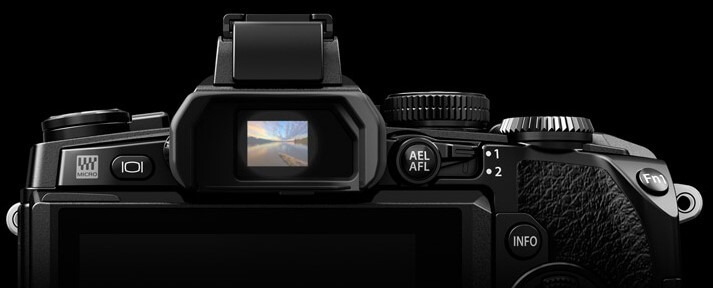 With the viewfinder of the camera, we can see the photograph before capturing the image, hence its vital importance. The optical viewfinder will allow you to see what you are going to photograph thanks to a system of mirrors that reflect the image. The electronic viewfinder or screen will show you the image on an LCD or OLED screen.
With the viewfinder of the camera, we can see the photograph before capturing the image, hence its vital importance. The optical viewfinder will allow you to see what you are going to photograph thanks to a system of mirrors that reflect the image. The electronic viewfinder or screen will show you the image on an LCD or OLED screen.
Not all viewers are the same. There is a big difference between them. Image size and clarity can vary greatly depending on the model. Therefore, it is recommended that you try it before choosing the camera you are going to buy. After all, it will have a fundamental influence on the images you capture.
Video Capture Resolution
It is increasingly common for SLR cameras to have the possibility of recording video in high definition. Having this extra possibility never hurts. In that case, you should check what resolution it does: HD, Full HD or 4K. Our advice is to record at least Full HD quality.
Megapixel Resolution
![]() When you talk about resolution in cameras, you often talk about megapixels. In general, more megapixels, higher resolution, and more detail will have the image. However, the image quality does not depend only on this factor. As we have already explained, the sensor size is equally important.
When you talk about resolution in cameras, you often talk about megapixels. In general, more megapixels, higher resolution, and more detail will have the image. However, the image quality does not depend only on this factor. As we have already explained, the sensor size is equally important.
In this way, a camera with a larger sensor will offer a larger area per pixel and, consequently, more quality and sensitivity. In any case, you should also keep in mind that a photograph with more megapixels will occupy more size. In the same way that a camera with a higher resolution will mean a greater investment.
Sensor Size
Somehow, the sensor is the soul of a camera, since it is the element responsible for capturing the light. In your case, size is a fundamental aspect. The larger the sensor, the more information you receive and so you can get a higher quality image. Of course, keep in mind that it is a very delicate element.
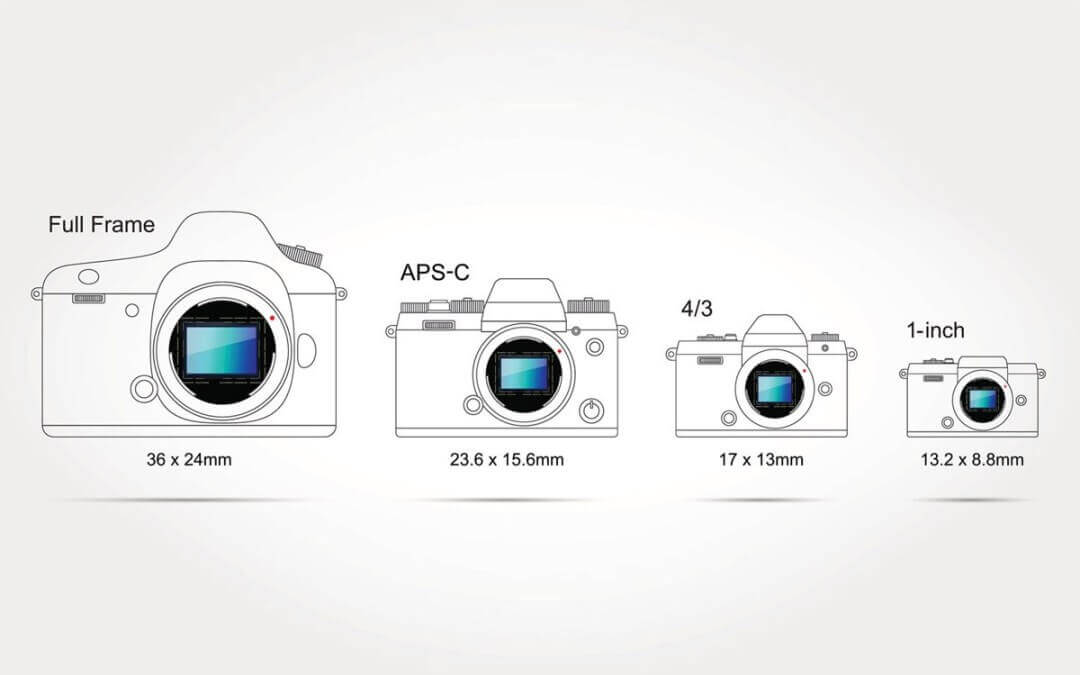
Currently, most SLR cameras integrate the APS-C sensor, used primarily by Canon, Nikon, and Sony, or the 4/3 sensor, used by Olympus, Panasonic, Leica, and Kodak. However, some cameras have a full-frame sensor (35mm). This is a larger sensor and is usually available in professional equipment.
Frames Per Second (FPS) Continuous shooting:
This particular feature is the number of shots per second. the photographer who takes pictures of moving objects is primarily interested in high frame rates. This means that if the device can increase the number of frames per second, it is more likely to capture the moment of interest.
Zoom Lens
Many entry-level DSLR camera kits for beginners come with an 18-55mm zoom lens, so the first device is primarily zoomed. This is because it is easy to understand as a zoom lens, so the focal length can be adjusted comfortably. Therefore, as you get closer, the image fills up with the subject, and zooming out gives you a wider shot.
Prime lens
In general, zoom lenses are more expensive than other lenses, less accurate, and more complex than the main lens. Simply put, the main lens is the opposite of zoom and only shoots at the focal length. If you want to shoot in a dark place, the main purpose is to help to do it. For beginners, 50 mm 1/1.8 is a good option.
Shutter speed
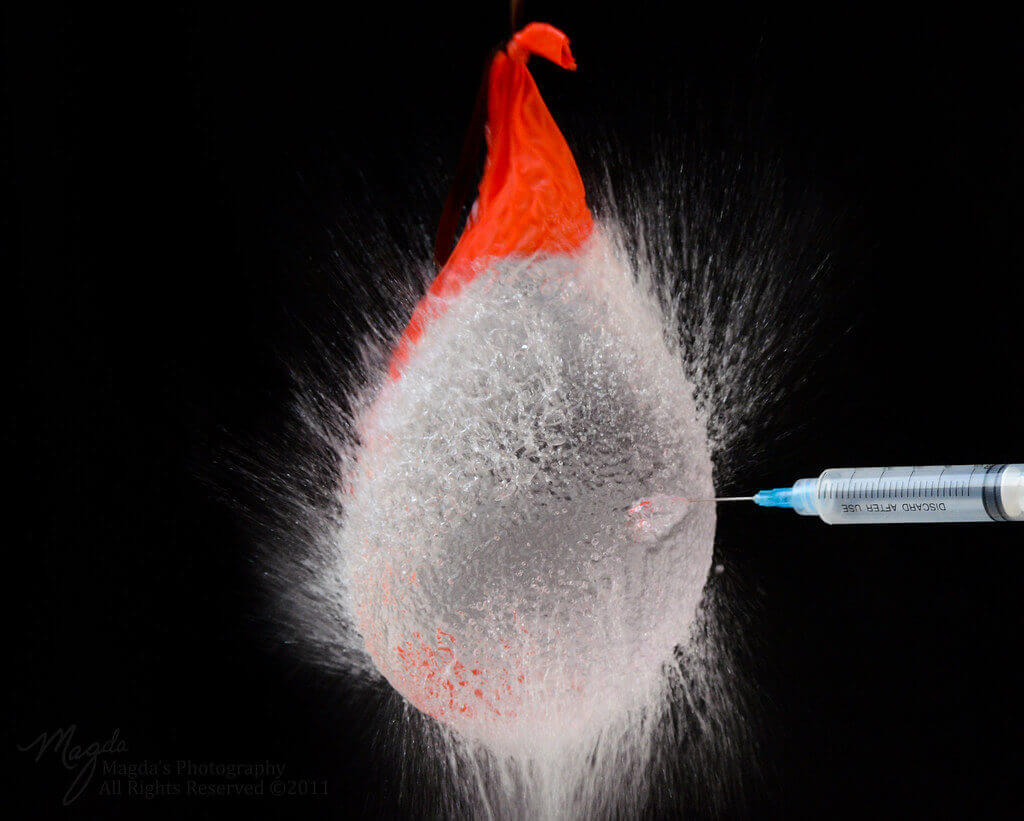 The shutter speed, as its name implies, refers to the length of time the camera shutter remains open when you click on the photo. By lowering the shutter speed, you can increase the amount of light that the sensor receives. If the shutter is open for too long, the image will be blurry. The shutter speed must be fast, so you need to make a trade-off between getting the right lighting or capturing objects moving at high speed.
The shutter speed, as its name implies, refers to the length of time the camera shutter remains open when you click on the photo. By lowering the shutter speed, you can increase the amount of light that the sensor receives. If the shutter is open for too long, the image will be blurry. The shutter speed must be fast, so you need to make a trade-off between getting the right lighting or capturing objects moving at high speed.
F-stop
F-stops, also known as openings, are described as numbers on the lens. For example, if a particular camera displays "Nikon 18-55 mm f / 3.5- 5.6 bundle lens", the variable aperture of the lens is at 18 mm, the f-stop is f/ 3.5, and there is an f-stop at 55 mm. f / 5.6. Changing the F value changes the diameter of the lens, so the amount of light that can be incident changes.
Lowering the F-stop value blurs the background because there is more light in the lens. Higher F-stop values reduce incident light but make the background much sharper.
ISO
The ISO value of a camera indicates the sensitivity of the sensor to light. With a high value, around 3,200, you can take pictures in low light conditions. On the contrary, a lower value in the ISO, of order 100, is ideal for taking photographs in good light conditions.
Of course, a very high value in the ISO entails much more noise in the image, so it is convenient to use it properly. And as we have seen, the more light there is, the lower ISO sensitivity can be used. In this way, a wider ISO range will allow you to enjoy more options.
Exposure
An exhibition refers to the brightness or darkness of an image. The photo is created when the camera sensor or filmstrip is exposed to light. This is the origin of the term. Images clicked in dark photos or dark areas are called underexposure, and images exposed to excessive light are called overexposure. Exposure is controlled by aperture, shutter speed, and ISO. You may be familiar with these three terms.
Image Stabilizer:
We should always look for the camera to have an optical image stabilizer, which is better than the digital one. We will be able to take better photos in many different situations without fear of “moving”.
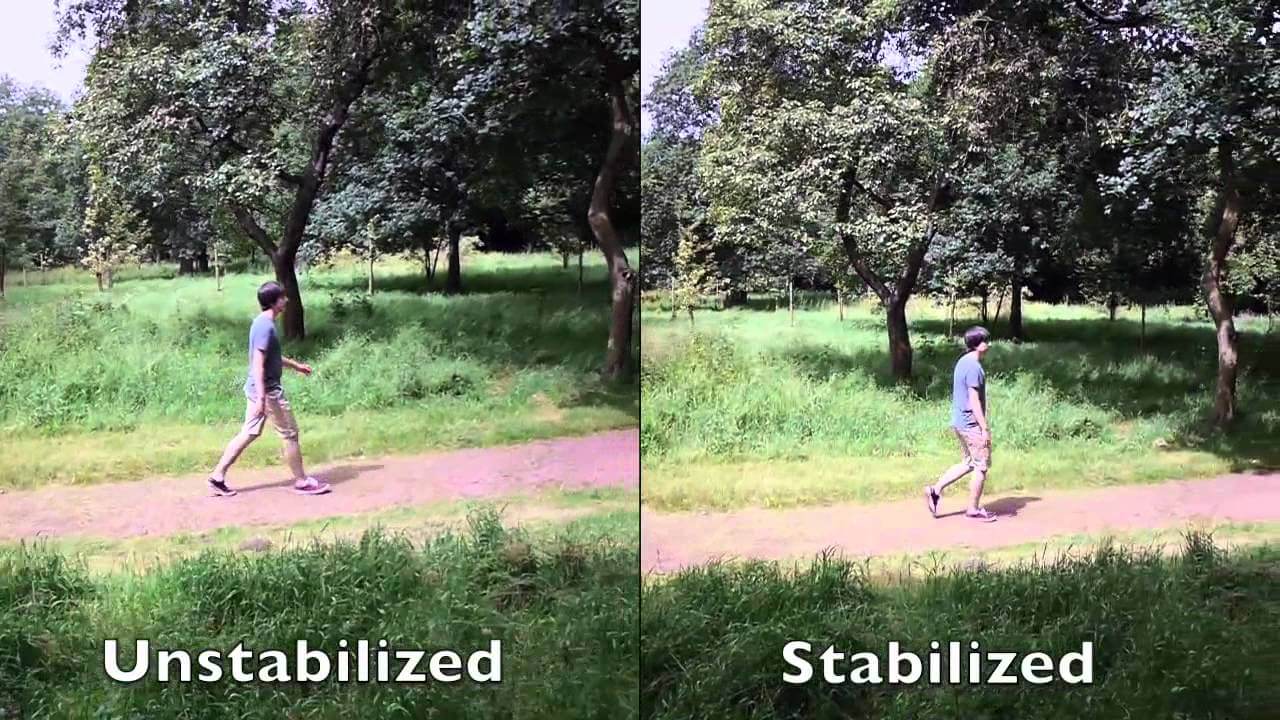
Battery Life:
You have to look for a rechargeable lithium battery, better than AA batteries. We'll watch how many shots it holds before it has to reload.
Connectivity:
GPS, WIFI or NFC. At a minimum, we should look for cameras with WIFI. It is a very useful functionality to transfer images to other devices and to connect our camera with the mobile. The GPS saves us the location of the images and the NFC allows us to more easily connect our camera with the smartphone.
File format
The file format is how the camera lens records an image or image file. Plain files usually have more information than JPG, so they are suitable for image editing in a variety of editing programs.
Focus
When you focus on nearby objects, objects that far away appear blurry. The term in this technical photo, called Focus, has the same simple meaning. What is in focus is clear, while objects that are not focused are not. Some areas of focus adjust whether the camera focuses on multiple points or to a single point selected by the user.
Flash
You can be sure to know what flash is. It is a burst of light, and the timing of the flash adjusts when the flash emits or explodes. Typically, when you click on a photo, the flash appears first. However, if you want the flash to emit light, you can change the flash synchronization mode to adjust it. For example, the flash synchronization mode of the back curtain emits flash at the end instead of the beginning of the image, as is usually observed.
Weight
The size and weight of the video DSLR depend heavily on what you use. It's easy to get familiar with and easily reach controls and switches. When you buy an action camera, the size and weight depend on where you place the camera during the event. Before you buy a selected camera, replace the battery to make sure you can easily access the controls.
Brand
The best-known brands of SLR cameras are Canon and Nikon. In addition to them, Sony and Pentax are also quite prestigious manufacturers and offer very good quality cameras. In any case, what you have to be clear about is that once you choose a brand, you will most likely be linked to it for life.
This is because the accessories and accessories you buy will only be compatible with that brand. Although, as in almost everything in life, there are always exceptions. Brands such as Sigma or Tamron have objectives that are compatible with Canon and Nikon equipment, with the advantage that they have a lower price.
Accessories/Gear
Advantages Of Owning A DSLR
FAQs of DSLR Camera for Video Recording
What is the best camera for under 500 dollars?
It depends a little on your taste. You can find a DSLR, a mirrorless camera, or a pretty good compact camera for less than 500 dollars. However, if you need to weigh all the options, the Sony a5100 is the best choice. This is because it is small and lightweight, and you can make the best investment for the money.
What camera has the best image quality?
If you only want to search for image quality in the range Under 500 dollars, the Sony a5100 is still a great option because it produces vivid, stunning and crisp images. For something a little heavy, I like the Nikon D3400. As a DSLR option, it provides excellent image quality even if you hold the lens of the kit.
Which type of camera is best?
Each type has its advantages. For example, DSLR is reliable, ergonomic, and tend to have long battery life. A compact camera is exactly that: compact. However, mirrorless is the latest technology and you can expect more and more. So if you're looking for something that's lightweight yet powerful and has a lot of future opportunities for add-ons and updates, don't use a mirror.
What is a good cheap camera for beginners?
The Nikon D3200 fits in a price range of fewer than 500 dollars and comes with a very convenient "beginner mode" that guides you through a variety of situations. The Sony a5000 is one of the best options for beginners on a limited budget. This is because it has a great automatic mode that can be launched before learning all manual settings.
Can you record videos with a DSLR?
The new DSLR is not only sharper and faster but can also be used for recording full HD video. There are a few tips to keep in mind when recording movies using DSLR. Even if you sit still like a statue, even a slight breath can shake the camera, so it's a good idea to use a tripod when recording video with a DSLR. Autofocus is a great tool when trying to shoot a moving subject, but manual focus allows you to use valuable creative techniques when shooting a stationary subject.
Manual approaches require practice, but in the end, they are worthwhile. You might think you need to record the event continuously and then go back to select the best section, but this can cause The DSLR to overheat. Shoot in short sequences using different types of shots.
What Video Camera is Best for Outdoor Use?
Panasonic Lumix DMC-ZS50 camera is an affordable device that records high-quality video and is the perfect camera for hiking and outdoor use. Its compact shape makes it easy to transport without feeling heavy or heavy. The long 20x optical/50x smart zoom telephoto lens and high sensitivity sensor greatly improve low-light images.
Users can send to smart devices via WI-FI, and Level Shot detects and corrects the tilt of captured images. These features are the best option for external camcorders, whether used on hunting trips or as a security device. You will be amazed at the full HD video feature.
How do I connect my DSLR to my laptop?
Tide Shooting is a photography technology favored by many photographers. You can connect your camera to your laptop or tablet and view digital images within seconds of capturing them. The fastest and easiest way to use the attached shots is to capture ADOBE Lightroom.
Here's how to do it:
- Connect the camera to your laptop with a USB cable and turn on the camera.
- Open the Lightroom application on your computer and go to File > Tether Capture > Start Tether Capture.
- When you open the Linked Capture Settings dialog box, you have the option to choose where to save the photo and add metadata and keywords. Note where you store your photos so that you can access them later.
- The next screen will be displayed and provided a narrow control panel for some light remote shooting options and a library where photos are captured via a connected shooting connection.
Conclusion
This was all about the Best DSLR for video Under 500 Dollars. With SLR cameras it is possible to take pictures of much higher quality. They offer greater control over the different parameters to consider when capturing an image. This is still an advantage because it means that they are not as accessible or as easy to handle as compact cameras.
Similarly, choosing the right SLR camera is not an easy task. It is necessary to take into account issues such as the use that will be made of it, the manufacturer, the sensor, the resolution, and the ISO sensitivity. To facilitate the task, in this guide we have made a detailed analysis of all of them and some more.
Finally, if you consider that this article has been useful in your selection process, you can leave us a comment or share it through the different social networks.
Top-Rated DSLR for video Under $500 in 2025
Also Read:
- Best Budget Underwater Camera To Capture Great Moments
- Best Vlogging Camera under $500
- Best Youtube Camera
FAQs
Which DSLR Camera Is Best For Videos?
There are many DSLR cameras available in the market that can shoot high-quality videos, but the best DSLR camera for videos would depend on your specific needs and budget. Here are some of the top DSLR cameras for shooting videos that you can consider:
- Canon EOS 5D Mark IV: This camera is popular among professional videographers because of its excellent image quality, dual-pixel autofocus, and 4K video capabilities. It also has a touchscreen LCD and a full-frame sensor.
- Nikon D850: This camera offers 4K video capabilities, a high-resolution full-frame sensor, and fast autofocus performance. It also has an impressive battery life, making it ideal for long video shoots.
- Sony A7S III: This camera is highly regarded for its excellent low-light capabilities, 4K video recording, and fast autofocus system. It also has a flip-out touchscreen and excellent image stabilization.
- Canon EOS Rebel T8i: This camera is a good option for those on a budget, as it offers 4K video recording and dual-pixel autofocus. It also has a vari-angle touchscreen and Wi-Fi connectivity.
- Panasonic Lumix GH5: This camera is popular among videographers for its excellent video capabilities, including 4K recording and slow-motion options. It also has a flip-out touchscreen and dual image stabilization.
Ultimately, the best DSLR camera for videos will depend on your specific needs and budget. It's always a good idea to do some research and read reviews before making a purchase.
Which DSLR Is Best For 4k Video?
There are several DSLR cameras that are great for shooting 4K video. Here are some of the top options to consider:
- Sony A7S III: This camera is highly regarded for its excellent low-light capabilities, fast autofocus system, and 4K video recording capabilities. It also has excellent image stabilization and a flip-out touchscreen.
- Canon EOS 5D Mark IV: This camera offers dual-pixel autofocus, 4K video capabilities, and a full-frame sensor for excellent image quality. It also has a touchscreen LCD and Wi-Fi connectivity.
- Nikon D850: This camera offers 4K video capabilities, a high-resolution full-frame sensor, and fast autofocus performance. It also has an impressive battery life and a tilting touchscreen.
- Panasonic Lumix GH5: This camera is popular among videographers for its excellent video capabilities, including 4K recording, slow-motion options, and high bit rate recording. It also has a flip-out touchscreen and dual image stabilization.
- Fujifilm X-T4: This camera offers 4K video recording with a high bit rate, in-body image stabilization, and fast autofocus performance. It also has a flip-out touchscreen and excellent image quality.
Ultimately, the best DSLR camera for 4K video will depend on your specific needs and budget. It's important to do your research and read reviews before making a purchase.
What Is The Best DSLR Canon Under 500?
If you're looking for a Canon DSLR camera under $500, the Canon EOS Rebel T7 is a good option to consider. Here are some of the key features:
- 24.1-megapixel APS-C CMOS sensor: This sensor produces high-quality images with good detail and color accuracy.
- DIGIC 4+ image processor: This processor allows for fast image processing and reduces noise in low-light conditions.
- 9-point autofocus system: This system provides fast and accurate focusing, which is helpful when capturing fast-moving subjects.
- Full HD 1080p video recording: This camera can shoot videos in full HD resolution at 30 frames per second.
- Wi-Fi and NFC connectivity: This feature allows you to easily transfer images and videos to your smartphone or other devices.
Overall, the Canon EOS Rebel T7 is a solid entry-level DSLR camera that offers good image quality, fast performance, and some convenient features. It's a great option for beginners or anyone on a tight budget.
Which Is The Best Budget Camera For Video?
If you're looking for a budget camera for video, there are several options available that offer good video quality without breaking the bank. Here are some of the best budget cameras for video:
- Panasonic Lumix G7: This mirrorless camera offers 4K video recording, fast autofocus, and a flip-out touchscreen. It also has a high-resolution EVF and built-in Wi-Fi.
- Sony A6000: This mirrorless camera offers full HD 1080p video recording, fast autofocus, and a compact design. It also has a tilting LCD screen and built-in Wi-Fi.
- Canon EOS Rebel T7i: This DSLR camera offers full HD 1080p video recording, fast autofocus, and a vari-angle touchscreen. It also has Wi-Fi and NFC connectivity.
- Nikon D3500: This DSLR camera offers full HD 1080p video recording, fast autofocus, and a compact design. It also has an excellent battery life and beginner-friendly controls.
- GoPro HERO9 Black: This action camera offers 5K video recording, HyperSmooth 3.0 video stabilization, and a waterproof design. It also has a front-facing LCD screen and built-in Wi-Fi.
Ultimately, the best budget camera for video will depend on your specific needs and budget. It's always a good idea to do some research and read reviews before making a purchase.
Is A Dslr Good For Videography?
Yes, DSLR cameras are great for videography, as they offer several advantages over traditional video cameras. Here are some of the reasons why DSLRs are a popular choice for videographers:
- Large sensors: DSLRs have larger sensors than most traditional video cameras, which allows for better low-light performance, shallow depth of field, and more dynamic range.
- Interchangeable lenses: DSLRs allow you to use different lenses to achieve different looks and focal lengths, which is essential for creative video work.
- Manual controls: DSLRs offer more manual controls for exposure, focus, and other settings, which gives you more control over the final result.
- High-quality video output: Many DSLRs offer high-quality video output, such as 4K or full HD, with high bitrates and color sampling.
- Portability: DSLRs are typically smaller and more portable than traditional video cameras, making them easier to transport and use in different shooting environments.
Overall, DSLRs can be an excellent choice for videography, especially if you prioritize image quality, creative control, and portability. However, it's important to note that DSLRs have some limitations, such as shorter recording times and autofocus limitations in some models, so it's important to choose the right camera for your specific needs.
Is Nikon Or Canon Better For Video?
Both Nikon and Canon offer excellent DSLR cameras for videography, so it really depends on your specific needs and preferences. Here are some factors to consider when comparing Nikon and Canon for video:
- Autofocus performance: Canon DSLRs are generally known for their excellent autofocus performance, which can be helpful for video work. However, some newer Nikon models, such as the Z6 and Z7, offer very good autofocus as well.
- Lens selection: Both Nikon and Canon offer a wide range of lenses for their DSLRs, but Canon has a slightly larger selection overall. However, Nikon has been investing heavily in their Z-mount mirrorless lenses, which offer excellent optical quality and versatility.
- Image quality: Both Nikon and Canon offer excellent image quality, with high-resolution sensors and good dynamic range. Some Canon models are particularly known for their excellent color science, which can be helpful for videographers.
- Video features: Both Nikon and Canon offer good video features on their DSLRs, such as full HD and 4K recording, high bitrates, and various frame rates. Canon is generally known for offering better video autofocus, while Nikon has been praised for their in-camera stabilization and dynamic range.
Ultimately, both Nikon and Canon offer excellent DSLR cameras for video, so it's important to choose a camera that fits your specific needs and budget. It's a good idea to read reviews, compare features, and try out cameras before making a purchase.
Which Camera Is Best For Videography?
Choosing the best camera for videography depends on your specific needs and budget, but here are some of the top cameras that are known for their excellent video capabilities:
- Sony A7S III: This full-frame mirrorless camera is known for its outstanding low-light performance and high-quality 4K video recording. It also has fast autofocus and in-body stabilization.
- Panasonic Lumix GH5: This micro four-thirds mirrorless camera is known for its excellent video features, including 4K 60fps recording, high bitrates, and professional-level codecs. It also has a vari-angle touchscreen and in-body stabilization.
- Canon EOS R5: This full-frame mirrorless camera offers high-quality 4K and 8K video recording, excellent autofocus performance, and in-body stabilization. It also has a vari-angle touchscreen and built-in Wi-Fi.
- Nikon Z6 II: This full-frame mirrorless camera offers good video features, including 4K 60fps recording and in-body stabilization. It also has fast autofocus and good low-light performance.
- Blackmagic Pocket Cinema Camera 6K: This compact cinema camera offers high-quality 6K video recording, a large Super 35 sensor, and professional-level features such as RAW recording and dual native ISO. It's a popular choice for indie filmmakers and video professionals.
These cameras offer excellent video capabilities, but they may be more expensive than some other options. If you're on a budget, there are several more affordable options available that still offer good video features, such as the Panasonic Lumix G7, Sony A6400, and Canon EOS M50. Ultimately, the best camera for videography depends on your specific needs and budget, so it's important to do some research and compare features before making a purchase.
Is 4k Better Than 1080p Camera?
Yes, 4K is generally considered to be better than 1080p when it comes to video resolution and image quality. 4K refers to a resolution of 3840 x 2160 pixels, which is four times the resolution of 1080p (1920 x 1080 pixels). This means that 4K video has more detail and clarity than 1080p, which can be particularly noticeable on larger screens or when zooming in on footage.
Here are some of the benefits of shooting in 4K:
- More detail: 4K video has more pixels than 1080p, which means it captures more detail and clarity in the image. This can be particularly helpful for shots with a lot of detail, such as landscapes or product shots.
- Better cropping: With 4K, you have more flexibility when it comes to cropping and reframing footage. You can crop in on a smaller portion of the frame without losing as much detail, which can be helpful in post-production.
- Improved color grading: With more pixels and detail, 4K footage can be easier to color grade and adjust in post-production, giving you more control over the final look of your video.
- Future-proofing: Shooting in 4K can be a good way to future-proof your footage, as 4K is becoming more and more common in video production and distribution.
While shooting in 4K can offer many benefits, it's important to note that 4K files are larger than 1080p files, which means they can take up more storage space and require more powerful hardware to edit and process. Additionally, not all devices or screens can display 4K resolution, so it may not be necessary or practical for all types of video projects.
Do I Need 4k For Filmmaking?
No, you do not necessarily need to shoot in 4K for filmmaking. While 4K can offer many benefits, such as improved detail and color grading flexibility, it is not always necessary for all types of filmmaking projects.
Here are some factors to consider when deciding whether to shoot in 4K:
- Your intended output: If your film will primarily be viewed on smaller screens, such as phones or tablets, or if you're creating content for social media, shooting in 4K may not be necessary as the additional resolution may not be noticeable. However, if you plan to project your film on a large screen, such as in a theater, or if you want to future-proof your footage, shooting in 4K may be beneficial.
- Your post-production workflow: Shooting in 4K requires more storage space and processing power than shooting in 1080p, which can impact your post-production workflow. If you don't have the necessary hardware or software to handle 4K footage, or if you're working with a tight deadline, shooting in 1080p may be more practical.
- Your budget: 4K cameras can be more expensive than 1080p cameras, so if you're working with a limited budget, shooting in 1080p may be more cost-effective.
Ultimately, the decision to shoot in 4K or 1080p depends on your specific needs and preferences, as well as the requirements of your project. It's important to weigh the benefits and drawbacks of each option and choose the option that best fits your needs and resources.
Is Nikon Or Canon Better?
Both Nikon and Canon are well-respected and popular brands in the photography industry, and both offer a wide range of cameras and lenses to suit different needs and preferences. Ultimately, which brand is better depends on the specific needs and preferences of the photographer.
Here are some factors to consider when comparing Nikon and Canon:
- Lens selection: Both Nikon and Canon offer a wide range of lenses to suit different needs and preferences, but Canon tends to have a larger selection of lenses, particularly when it comes to specialty lenses and zoom lenses. However, Nikon lenses are generally known for their high quality and sharpness.
- Image quality: Both Nikon and Canon produce high-quality images, and the image quality of their cameras is often comparable. However, some photographers may prefer the color reproduction or dynamic range of one brand over the other.
- Autofocus: Both Nikon and Canon have advanced autofocus systems, but Canon is often praised for having faster and more accurate autofocus, particularly in low-light conditions.
- Ergonomics and user interface: The ergonomics and user interface of a camera can vary between brands, and some photographers may prefer the layout and controls of one brand over the other.
Ultimately, the choice between Nikon and Canon comes down to personal preference and the specific needs of the photographer. It's important to try out different cameras and lenses, read reviews and specifications, and consider factors such as lens selection, image quality, autofocus, and user interface before making a decision.
Which Is The No 1 Dslr Camera In The World?
It's difficult to declare a single "no. 1" DSLR camera in the world, as different cameras excel in different areas and there are many factors to consider when comparing cameras. However, there are several DSLR cameras that are highly regarded and widely used by professional photographers around the world.
Here are a few DSLR cameras that are often considered to be among the best:
- Canon EOS 5D Mark IV: This full-frame DSLR is known for its high-quality image sensor, advanced autofocus system, and a weather-sealed body. It's a popular choice for professional photographers who need a reliable and versatile camera for a range of photography genres.
- Nikon D850: This full-frame DSLR offers a high-resolution image sensor, a fast autofocus system, and a rugged weather-sealed body. It's a popular choice for landscape, wildlife, and portrait photographers who need high-resolution images with lots of detail.
- Sony A9 II: While not technically a DSLR, the Sony A9 II is a full-frame mirrorless camera that offers fast autofocus, high-speed continuous shooting, and impressive image quality. It's a popular choice for sports and action photographers who need a camera that can keep up with fast-moving subjects.
- Canon EOS-1DX Mark III: This full-frame DSLR is designed for professional sports and wildlife photographers, with advanced autofocus, fast burst shooting, and a weather-sealed body. It's a high-end camera that offers top-of-the-line features and performance.
Again, there is no single "no. 1" DSLR camera in the world, as different cameras excel in different areas and the choice of camera ultimately depends on the specific needs and preferences of the photographer.
Which Is the Best Budget Dslr?
There are several great budget DSLRs available on the market, each offering a combination of features, performance, and affordability. Here are some of the best budget DSLRs:
- Canon EOS Rebel T7: This is a great entry-level DSLR with an APS-C sensor, 9-point autofocus system, and Full HD video recording. It offers good image quality and user-friendly controls, making it a great option for beginners or those on a budget.
- Nikon D3500: This is another entry-level DSLR with an APS-C sensor, 11-point autofocus system, and Full HD video recording. It offers good image quality, fast autofocus, and a lightweight body, making it a great choice for beginners or those looking for a budget-friendly option.
- Pentax K-70: This is a mid-range DSLR with an APS-C sensor, an 11-point autofocus system, and 1080p video recording. It offers weather-sealing, in-body image stabilization, and good image quality, making it a great option for outdoor photographers or those looking for a versatile camera.
- Canon EOS Rebel T6: This is another entry-level DSLR with an APS-C sensor, 9-point autofocus system, and Full HD video recording. It offers good image quality and user-friendly controls, making it a great option for beginners or those on a budget.
- Nikon D5600: This is a mid-range DSLR with an APS-C sensor, 39-point autofocus system, and Full HD video recording. It offers good image quality, fast autofocus, and a lightweight body with built-in Wi-Fi and Bluetooth connectivity, making it a great option for those looking for a more advanced camera on a budget.
Ultimately, the best budget DSLR depends on your specific needs and preferences, so it's important to consider factors such as image quality, autofocus performance, video recording capabilities, and overall usability when making a decision.
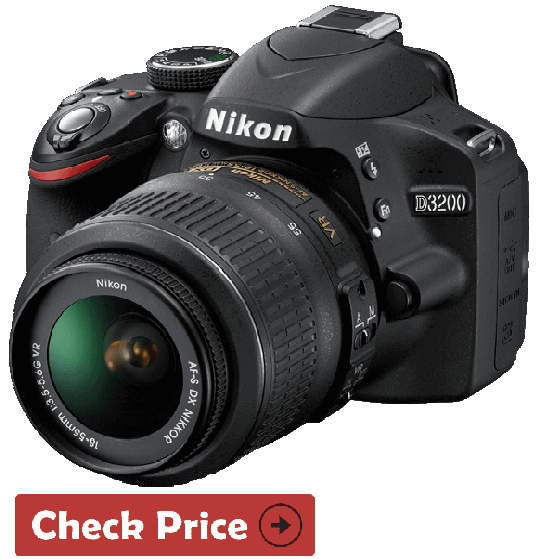
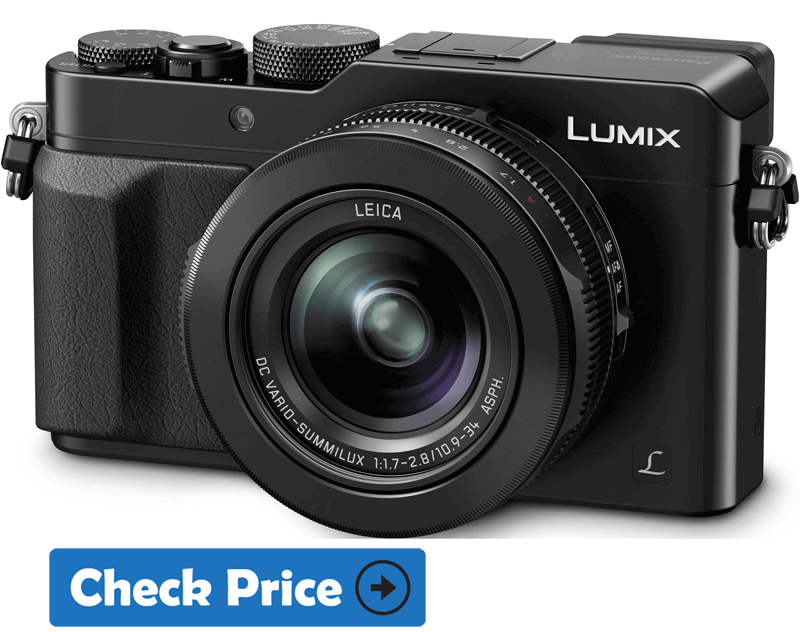
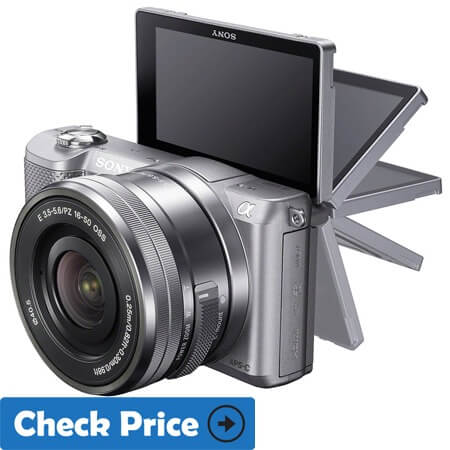
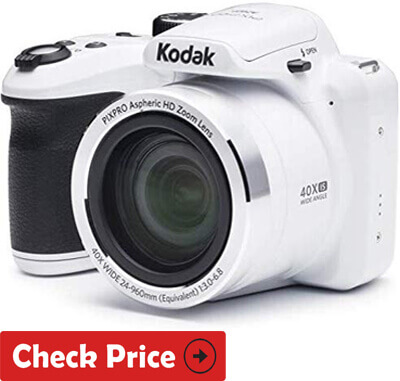
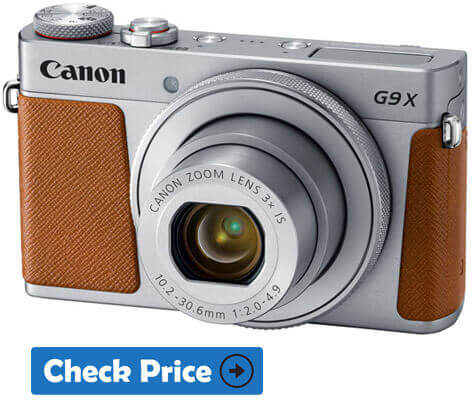
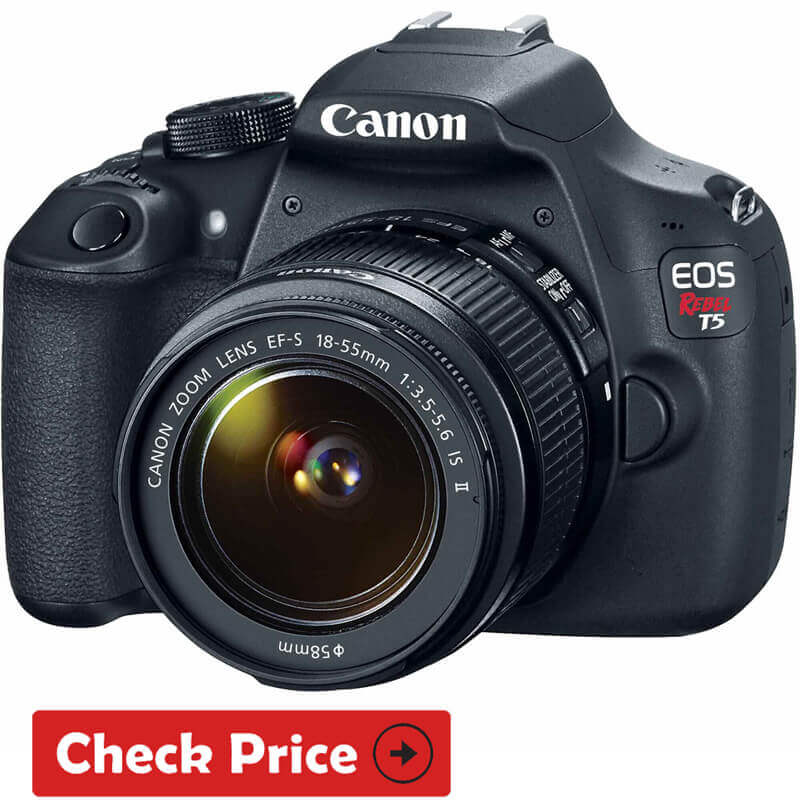
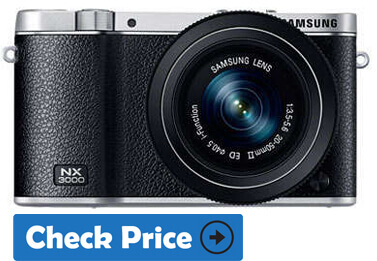






Great content! Super high-quality! Keep it up! 🙂
Would you help me with something if you have a second? I’m looking at a new DSLR and it seems like Nikon and Canon are the 2 big players. Do you think those are the best brands? And do you prefer one over the other? It seems like there are other cheaper options out there. I’m looking for the best bang for my buck really. Thanks!